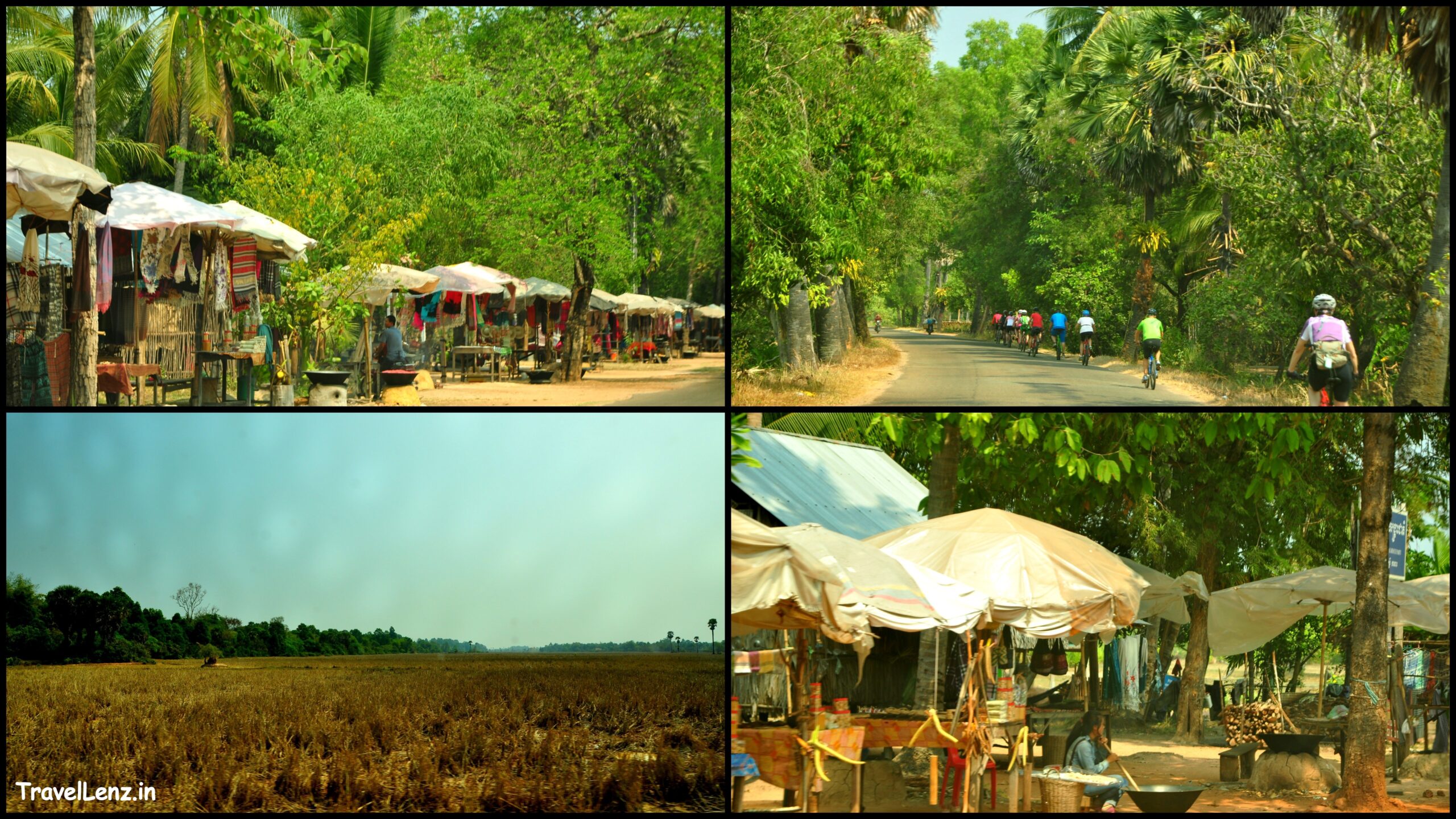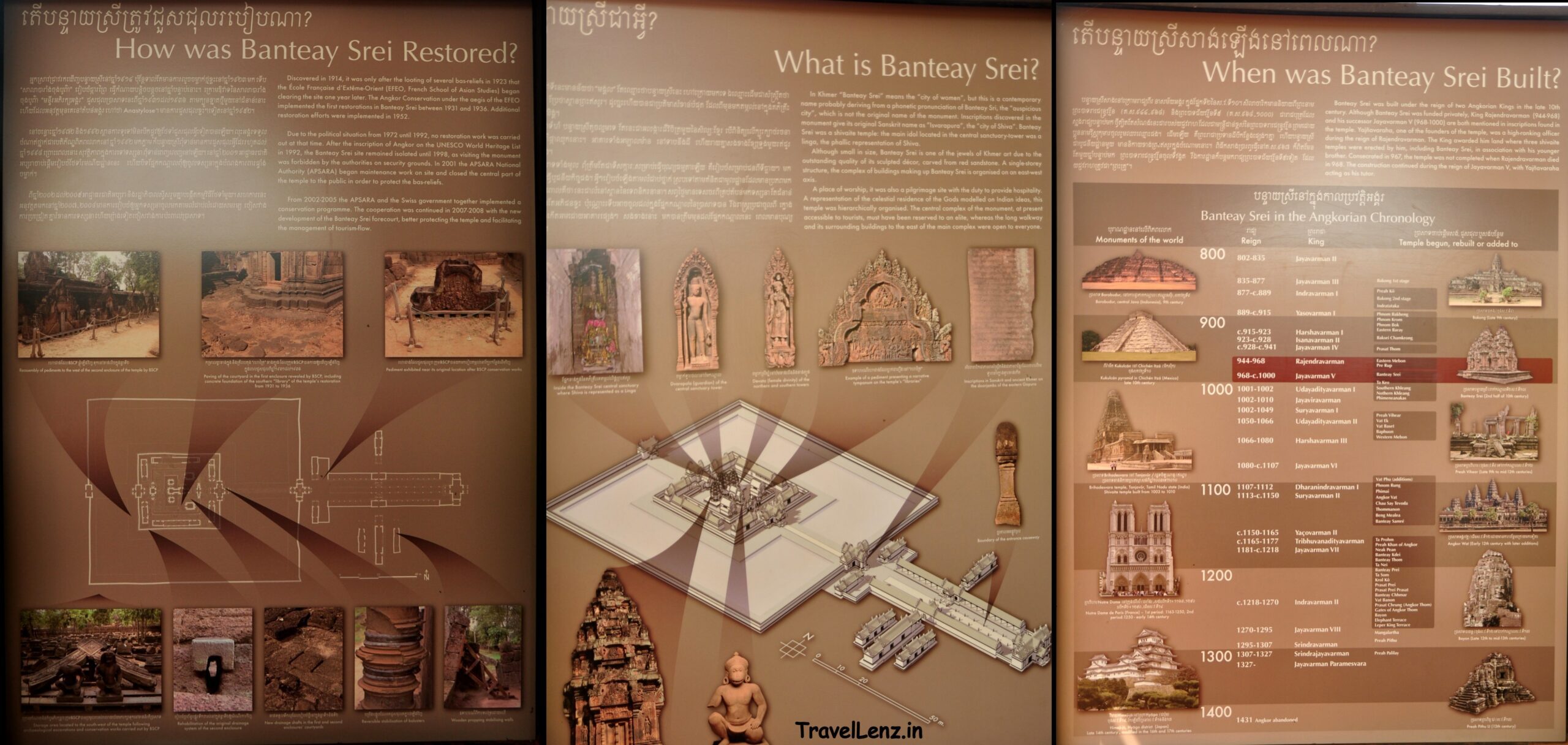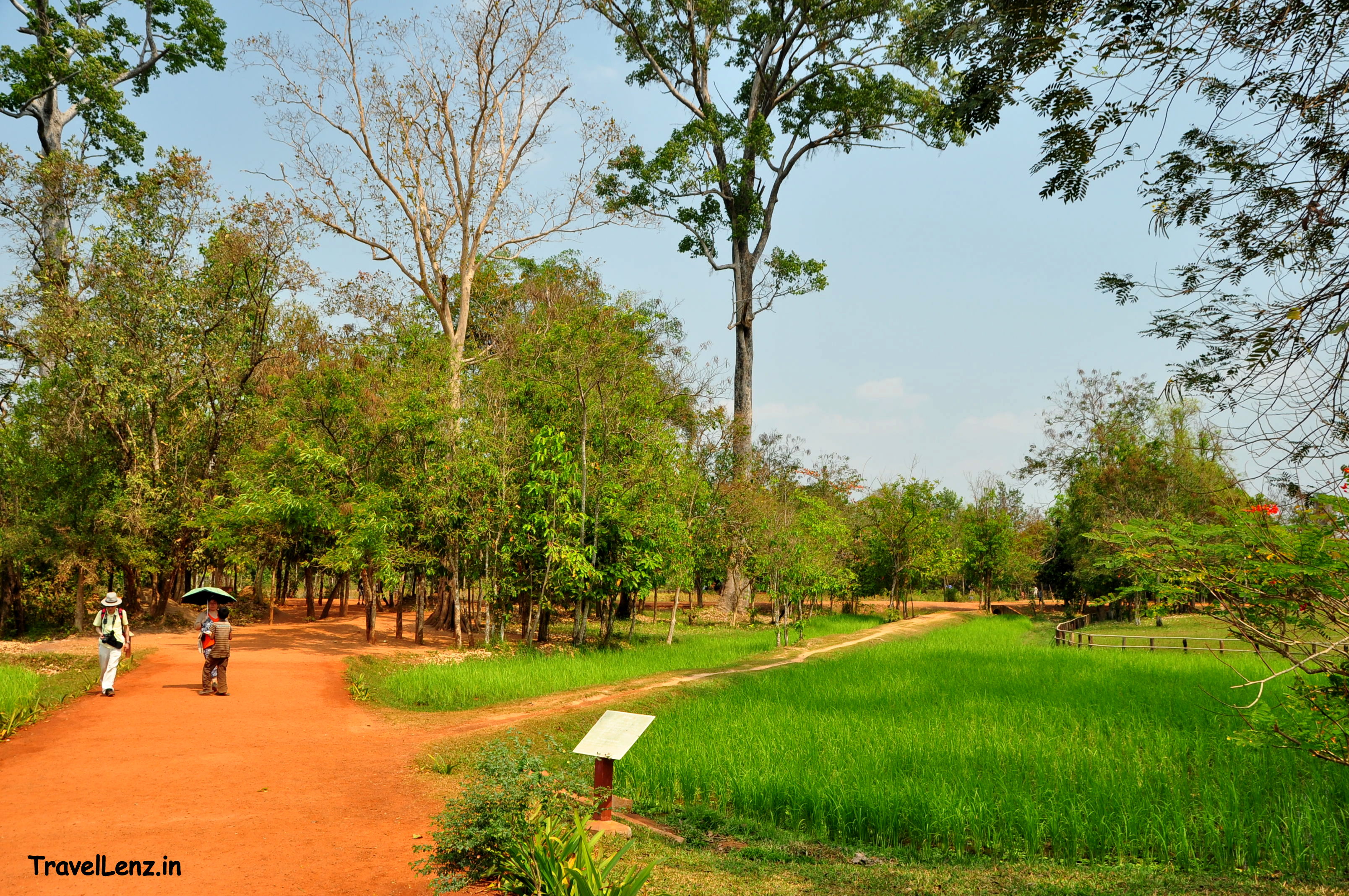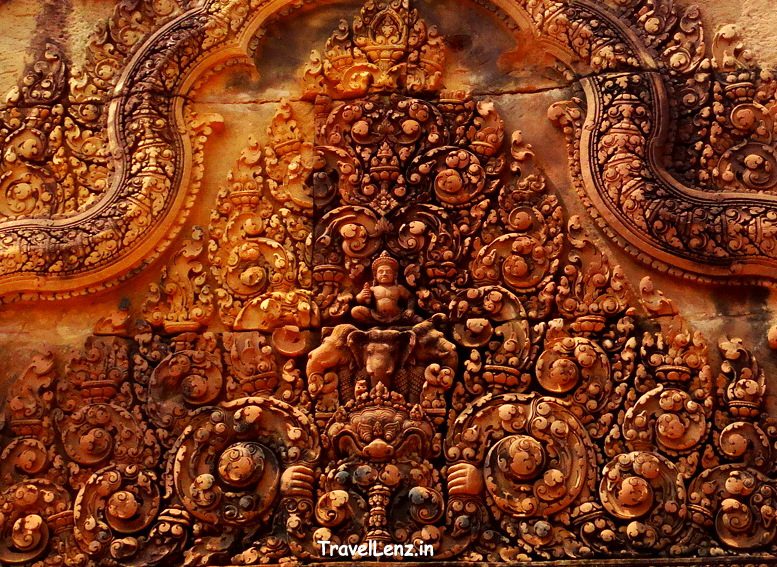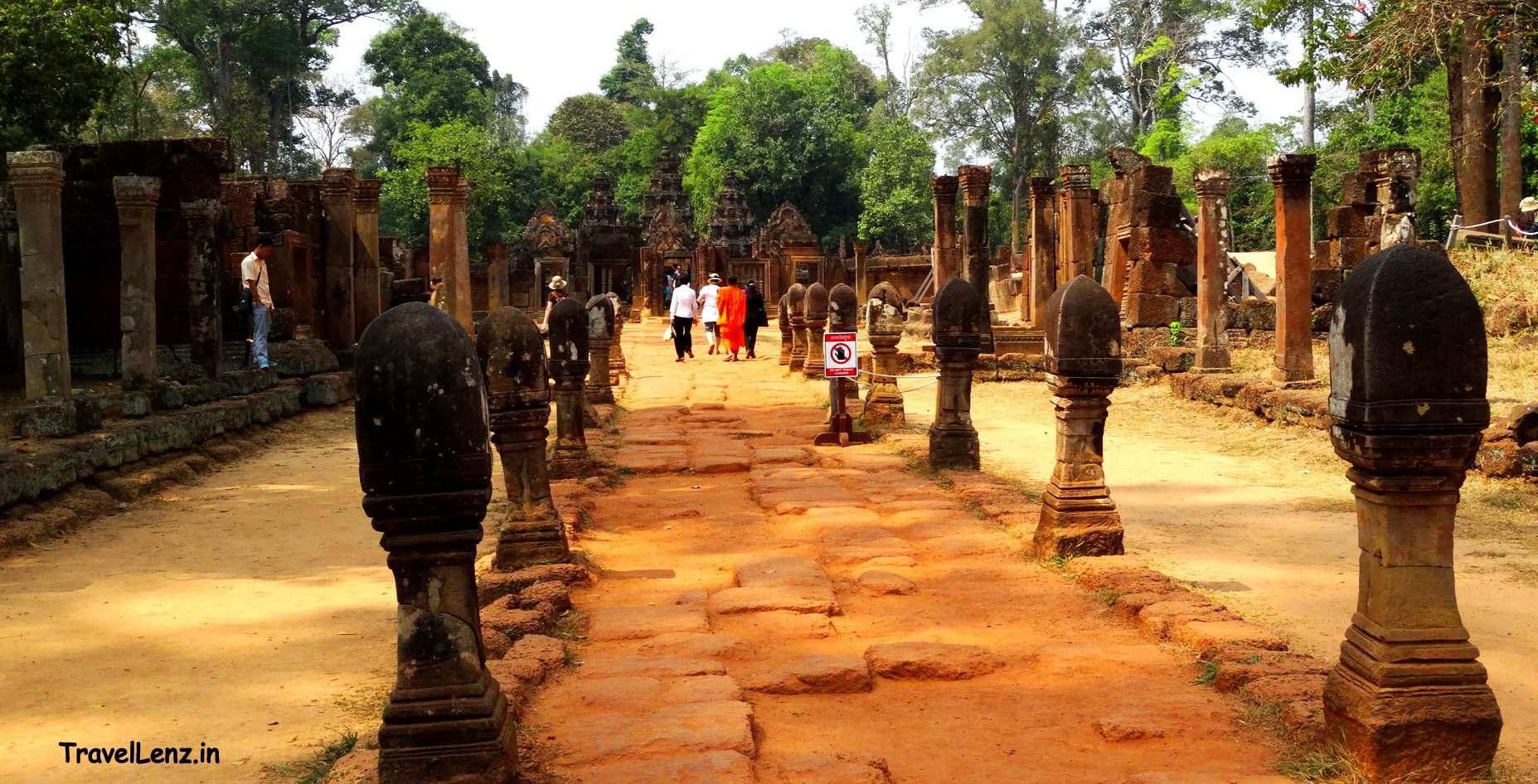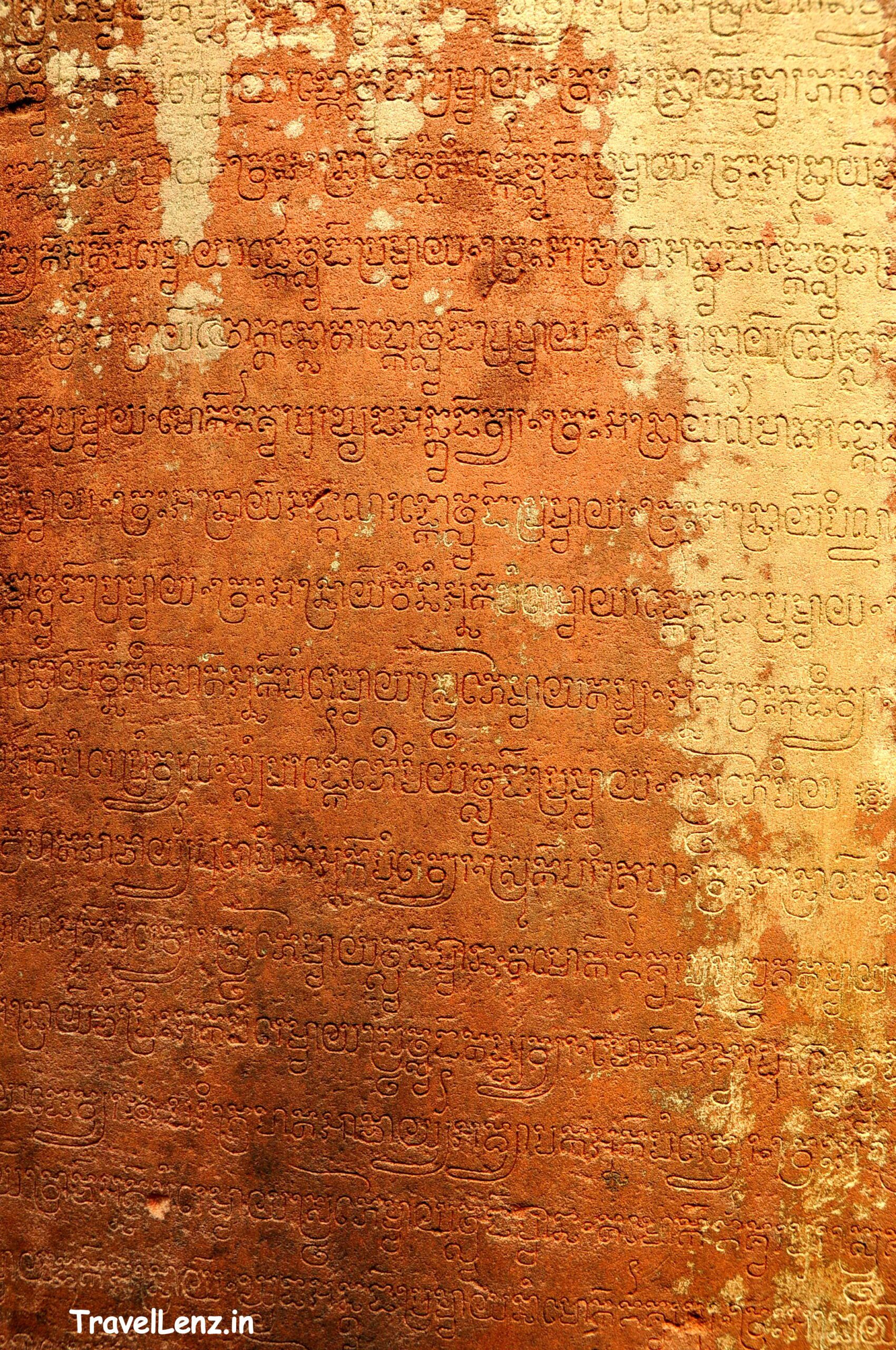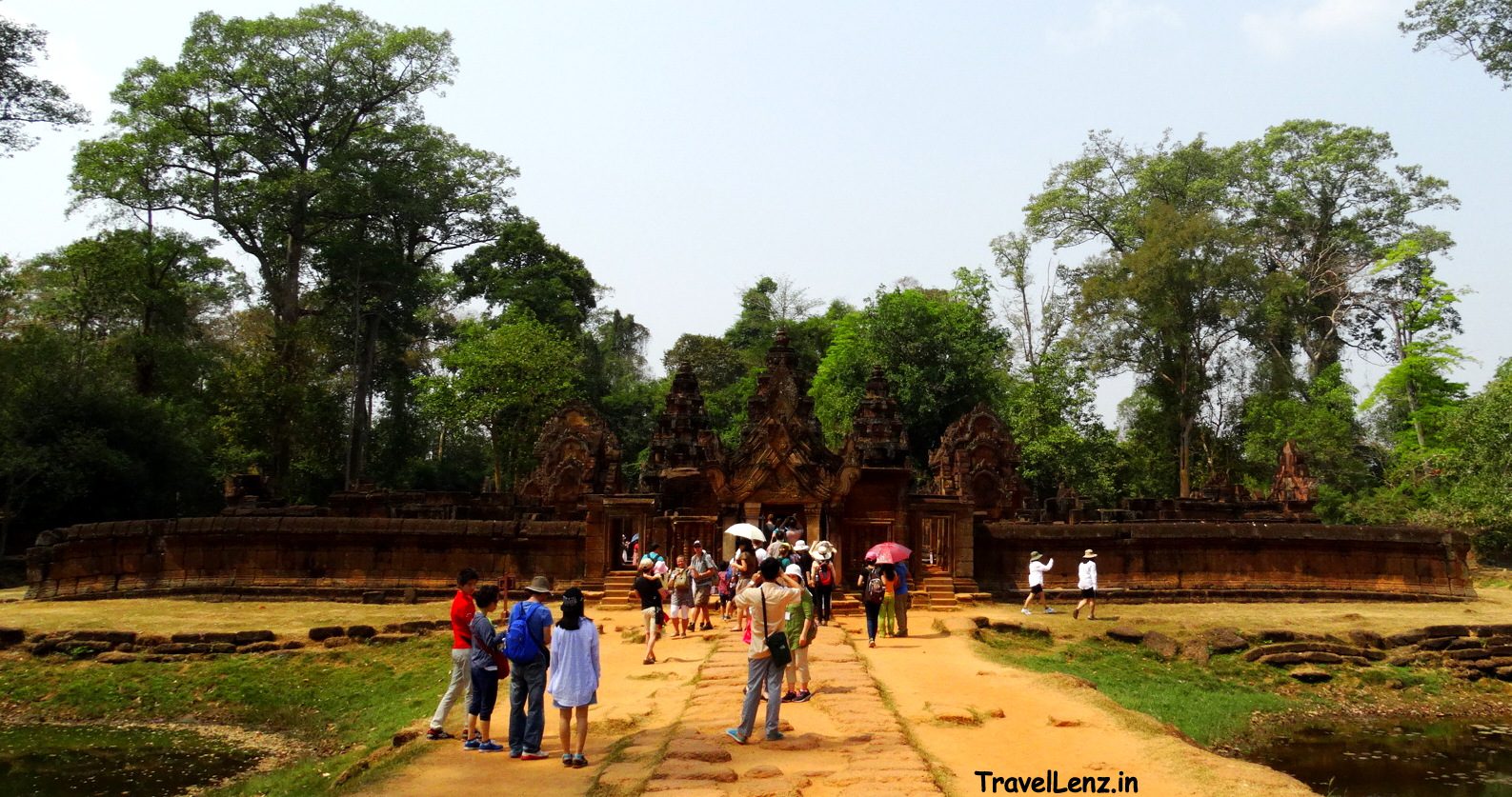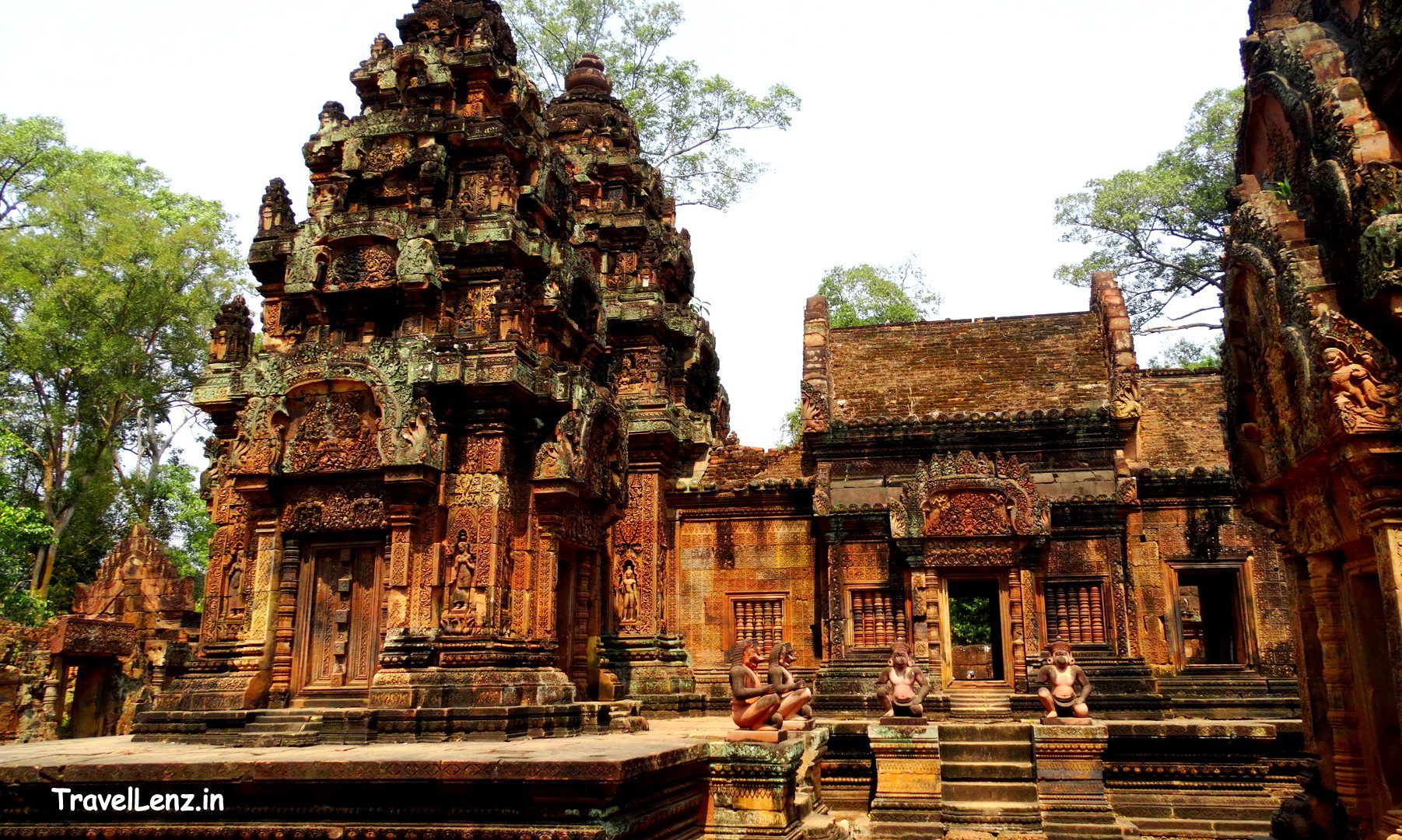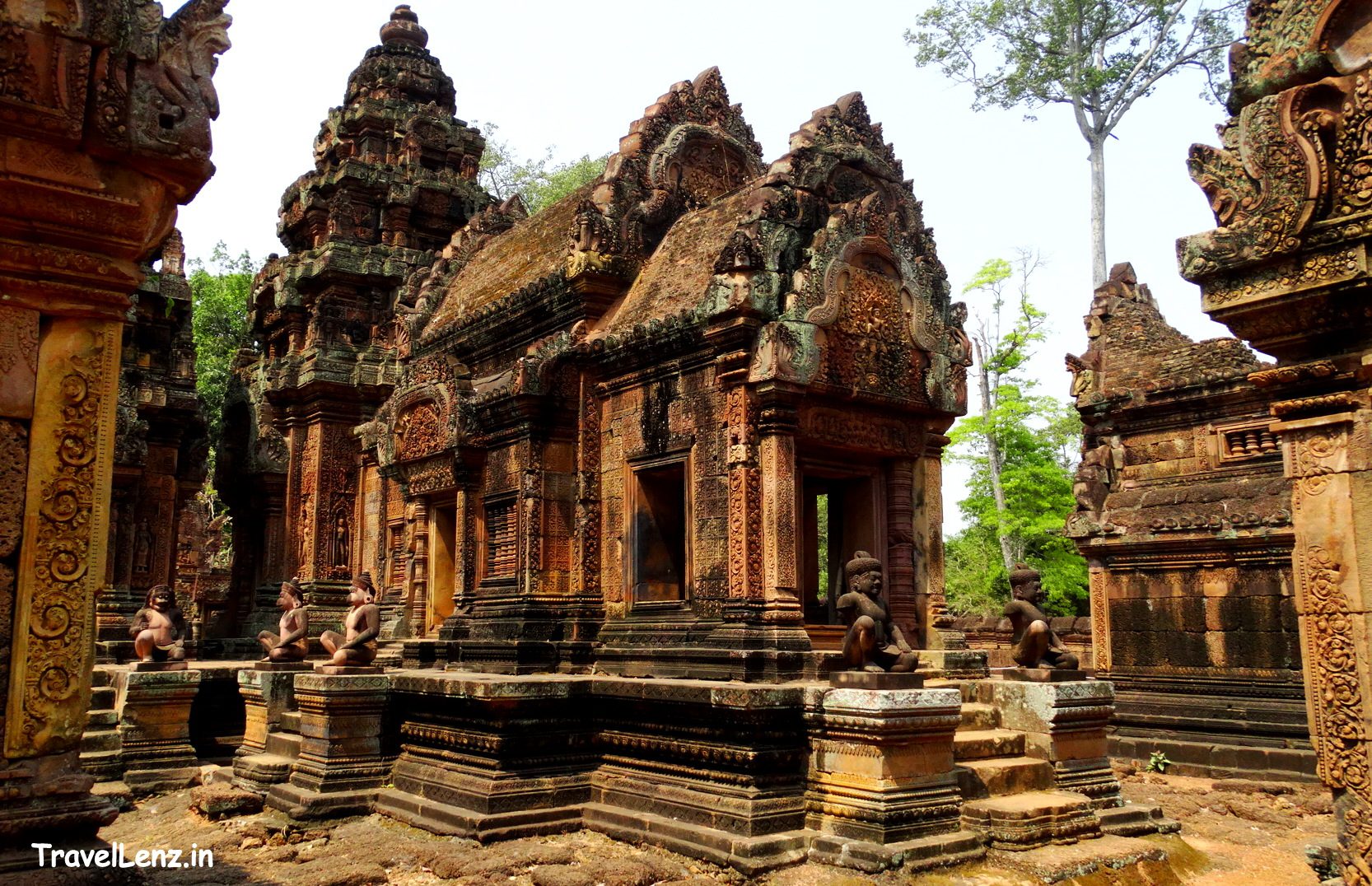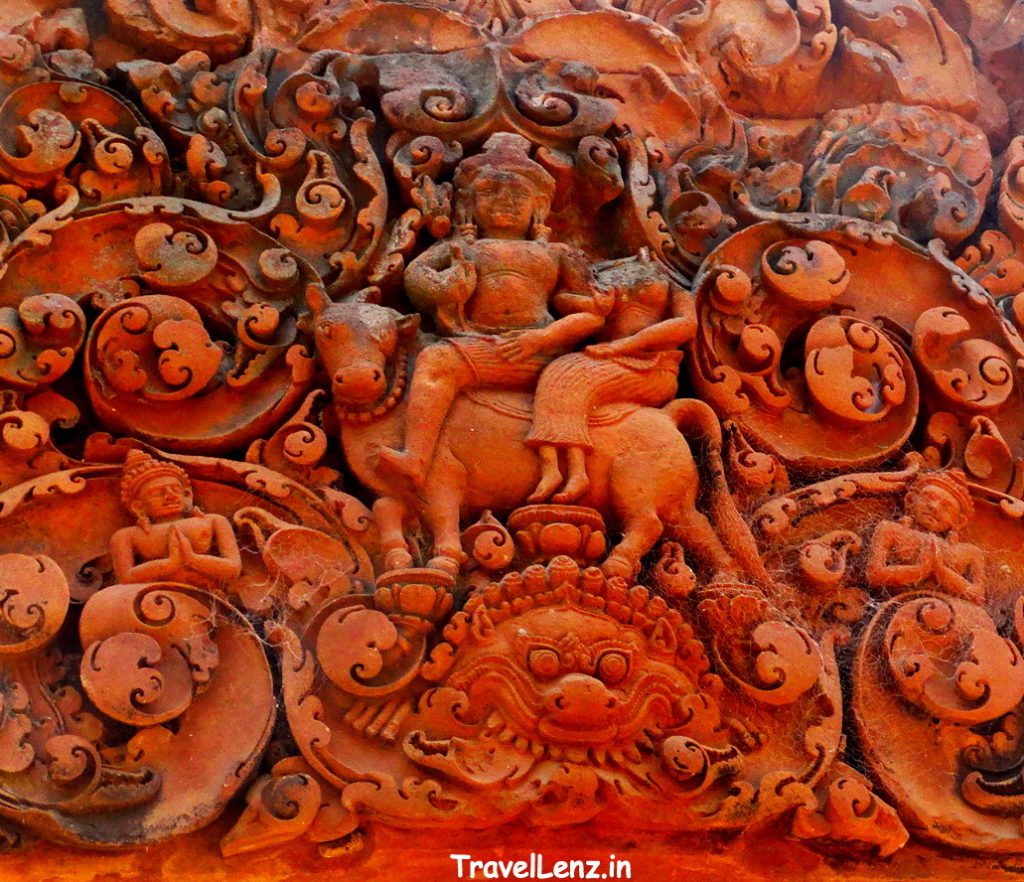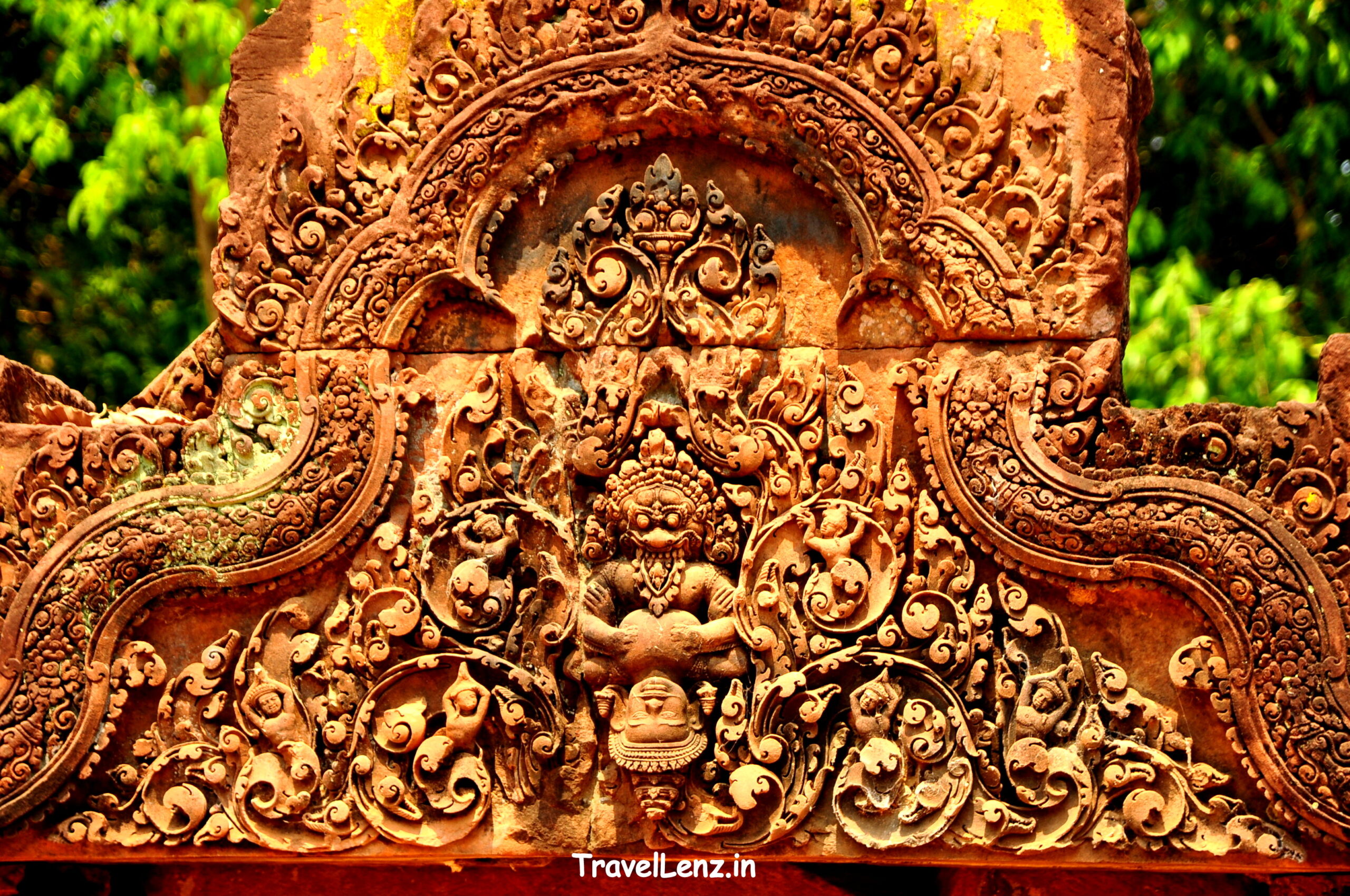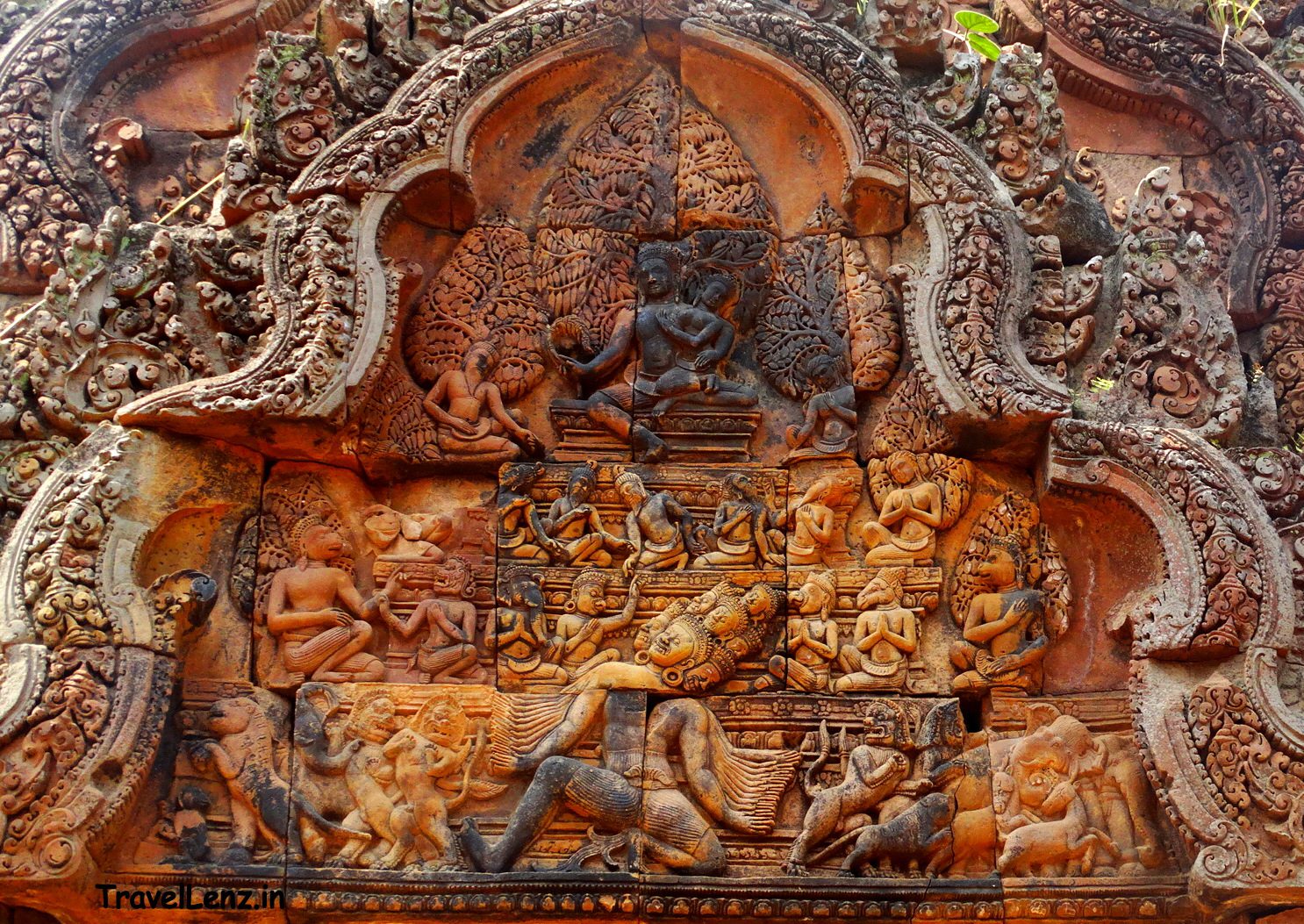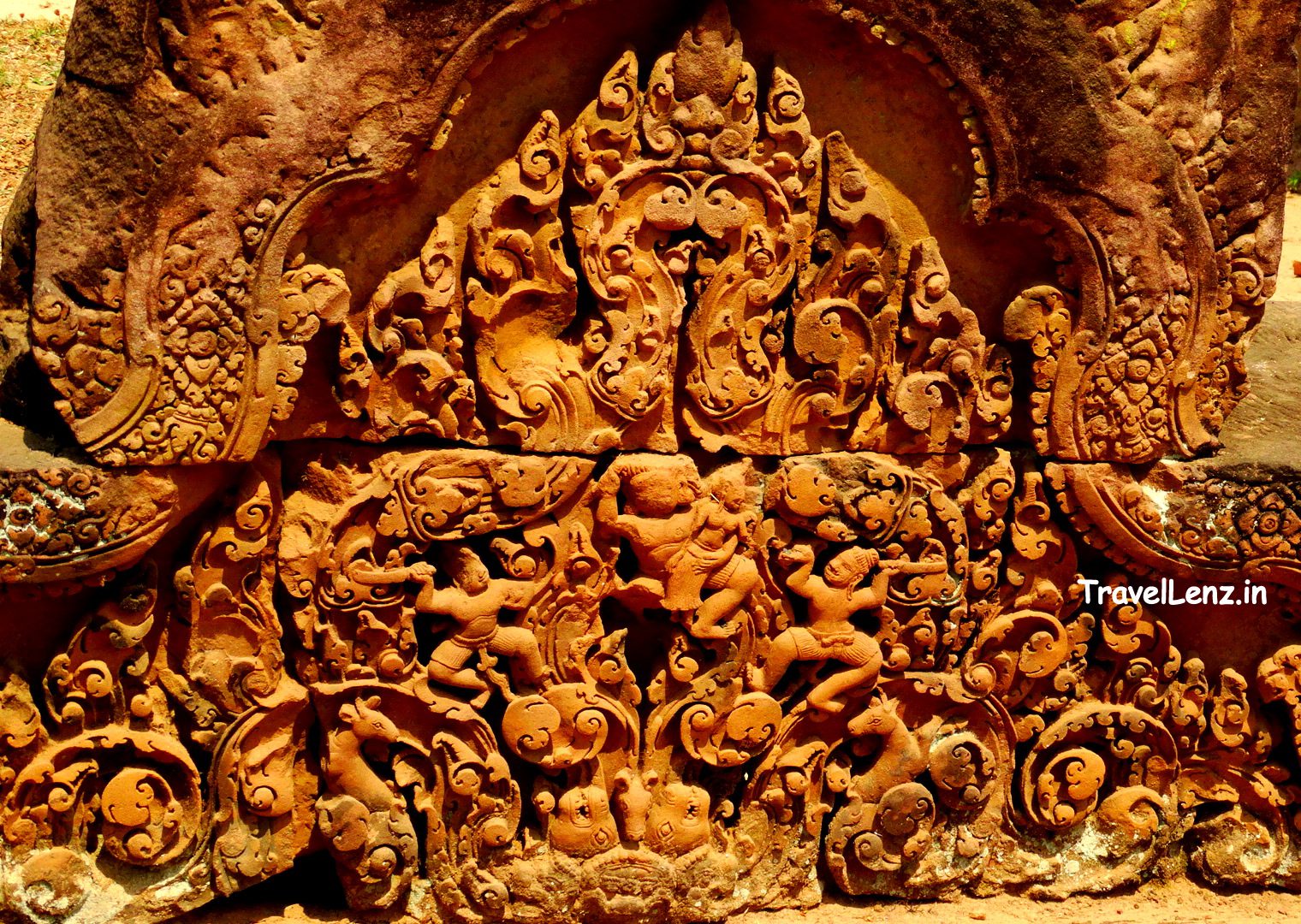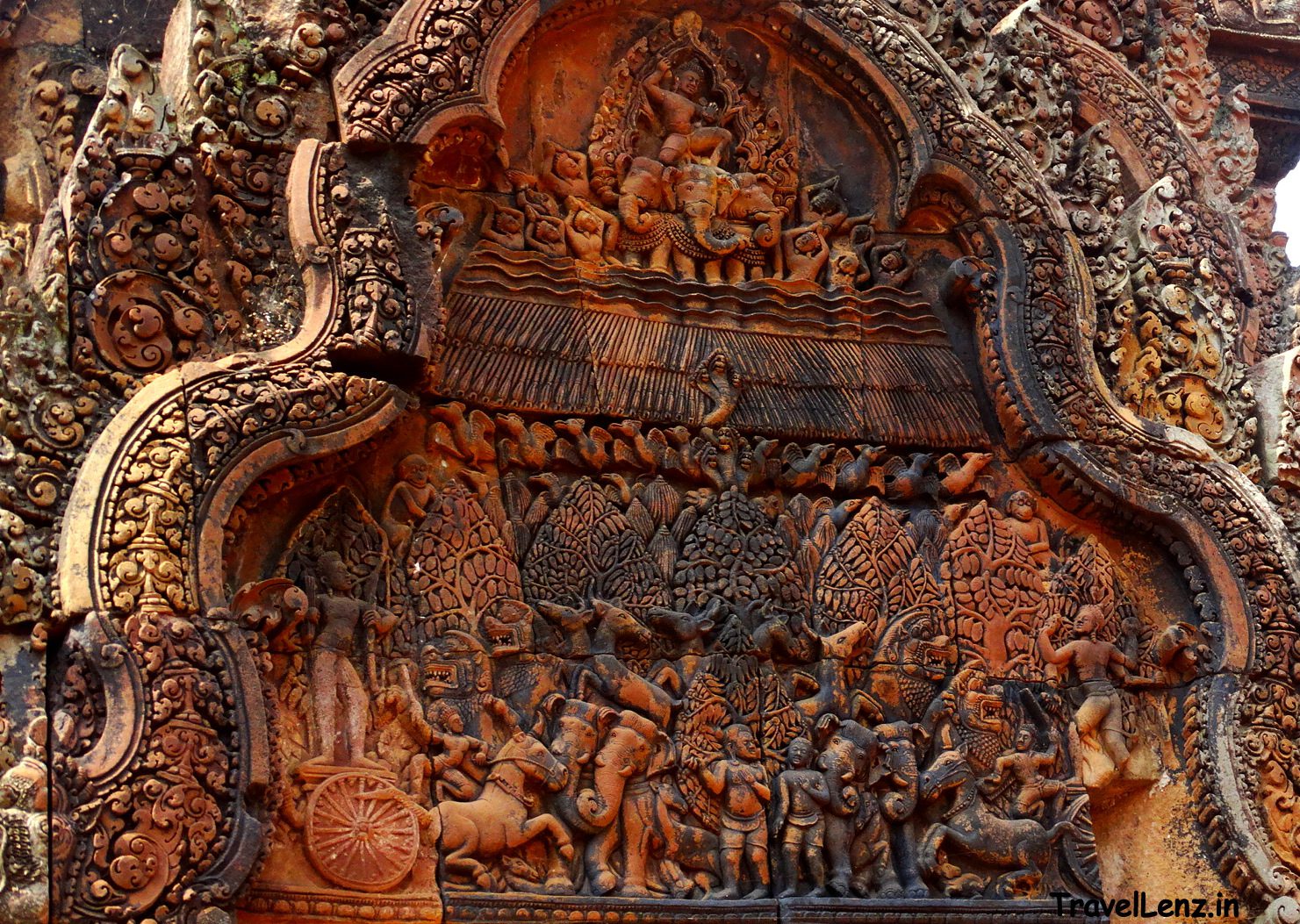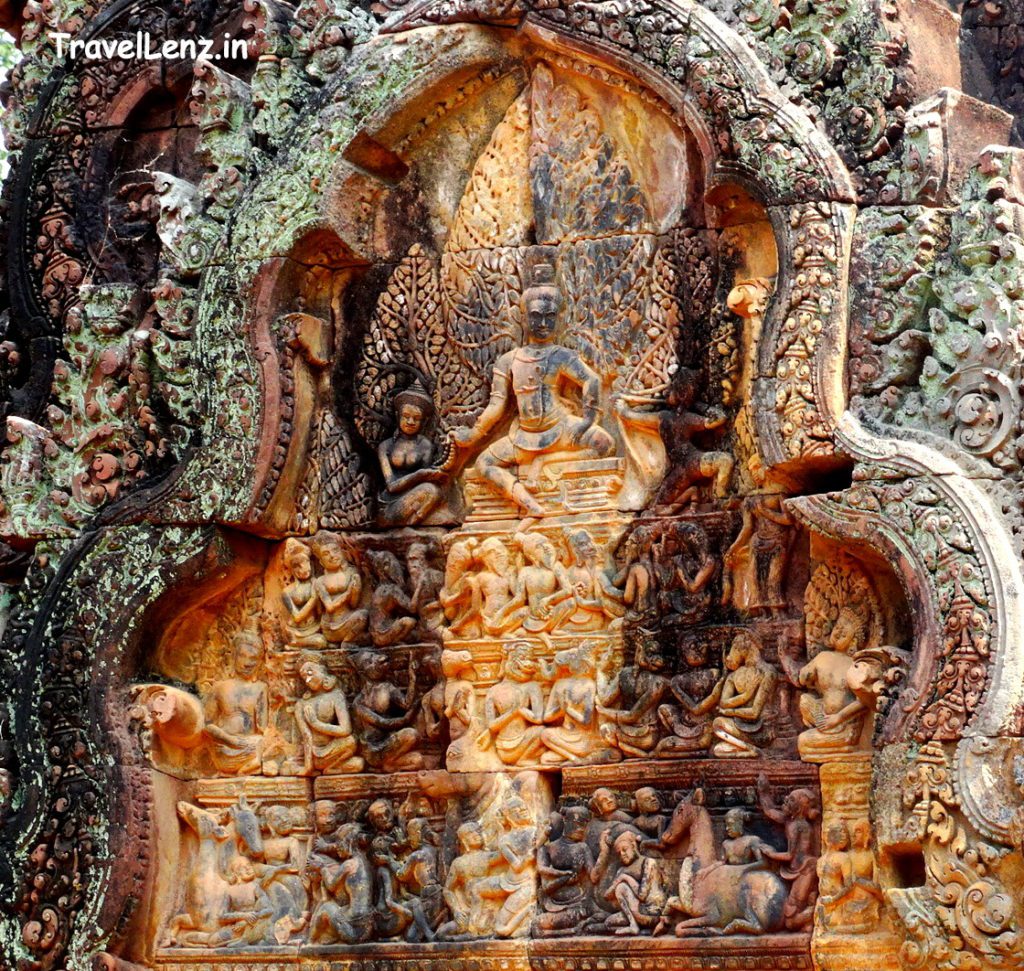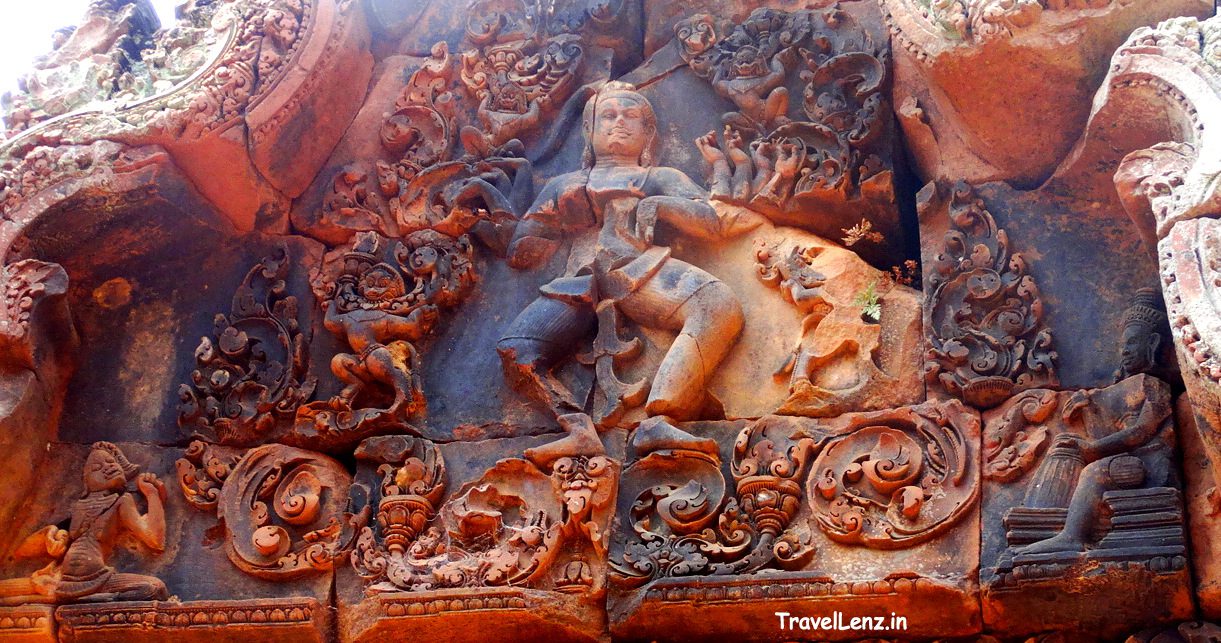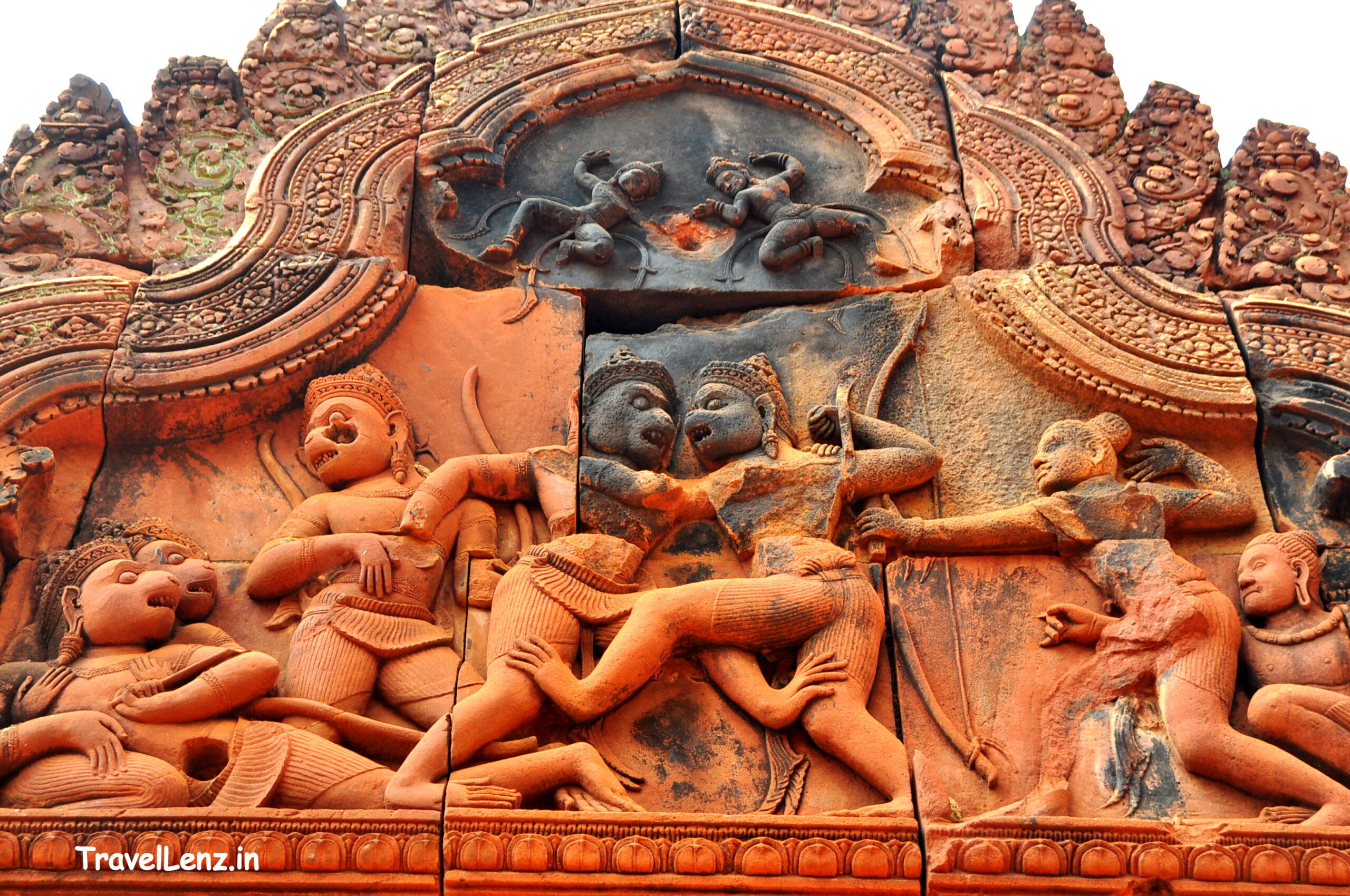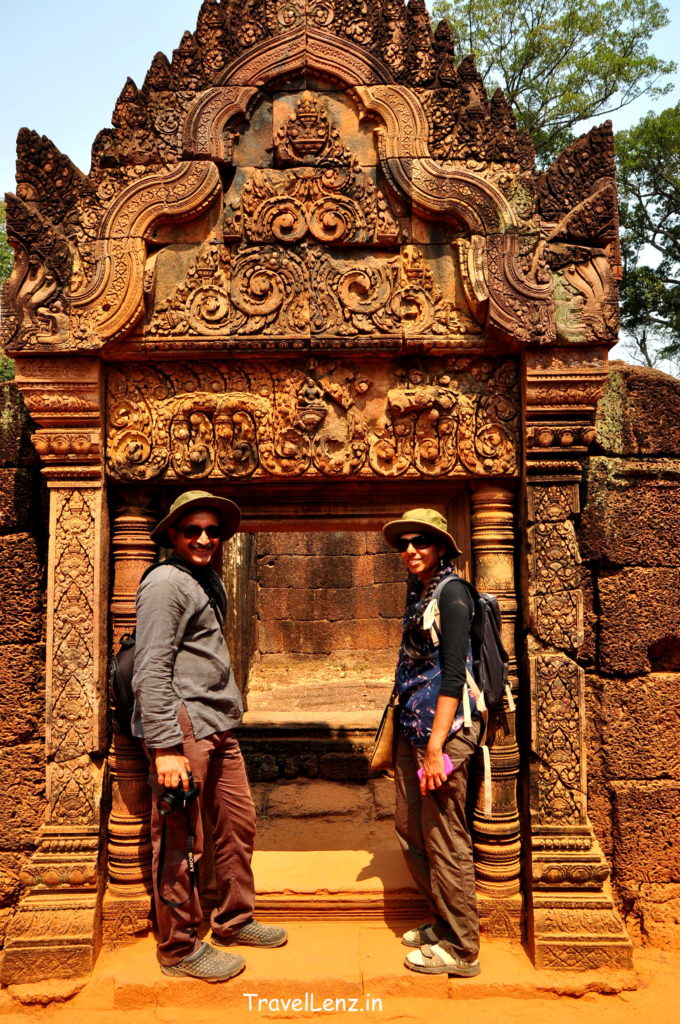Last Updated on May 21, 2021
While many of the Angkorian temples begin to look almost the same after you’ve spent two days shuttling from one to another, there is one temple that stands out in more than one way. Located about 20 odd kilometres away from the Angkor Wat complex, Banteay Srei, even with its out of the way location is widely popular. The life-size sculptures and the exquisite carvings that are done in red sandstone are a huge contrast to Angkor’s iconic grey coloured sandstone.
On our way to Banteay Srei
From Pre Rup, as Tes took the NR 67 route and drove through the countryside, passing fields, villages, and small roads lined with souvenir shops, he told a few interesting facts about Banteay Srei. This temple was not commissioned by a king, but by a Brahmin, a counselor, who was the ‘guru’ (tutor) of the royal family.
The temple is known as the Citadel of Women because of its beauty and the delicacy of its decoration. Another theory is that the intricate detailing on this temple was considered too fine for the hands of a man and thus, supposedly executed by women.
Information regarding Banteay Srei
Tes parked his SUV near a small exhibition hall which had a brief introduction on the temple, when it was built, how it was restored and information on the various shrines and chambers spread around the complex. There were souvenir shops, refreshment kiosks, and clean washroom facilities in the complex.
The temple was a small walk from the parking lot, we cut across a paddy field and a shaded area before reaching a red mud road.
Outer eastern gopura
From here the outer east gopura was visible. As we walked through the gopura, we did realise how different the pink hue on this laterite temple looked from the grey sandstone of the other Angkor temples.
Right at the entrance, like in many of the other Khmer temples, is Lord Indra riding his mount, the three-headed elephant – Airavata. Indra is the guardian of the east and most of the temples have him carved on the eastern gopuras.
Walking through the entrance we faced a long causeway which was lined with stone posts with lotus buds on top, 32 posts in all. We had seen similar posts at Phnom Rung in Thailand.
On either side of the posts were columns and remains of laterite galleries. At the end of the causeway was a stone with inscriptions on it. The inscriptions said that Banteay Srei was originally called Isvarapura. The inscriptions, Tes mentioned, were in an ancient Indian language. It was clearly written using a stencil, as all the letters looked neat and of the same dimension.
From there we cut across another causeway, with a moat on either side, to reach another gopura.
This gopura had double tired pediments.
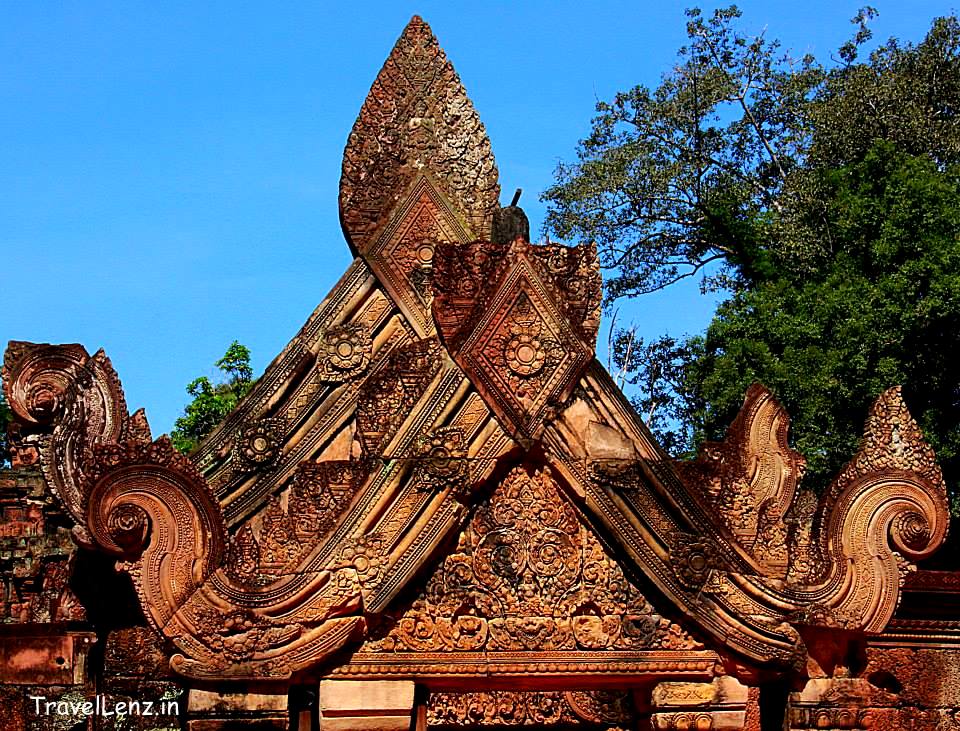
Once we entered the gopura we found remnants of what looked like a Nandi bull in sitting position on the floor with only the limbs and tail intact. There were also remains of Shivalinga pedestals.
Main sanctuary
The temple complex had three main shrines. The central one had a small mandapa extending from it. The three shrines had elevated platforms on all sides with short stairs leading up.
At the top of each stair were figures of kneeling statues. These statues were the guardians of this temple. The guardians had bodies of a human, but the heads were different – monkey, lion, garuda, and yaksha. The central and the left shrine were dedicated to Shiva, while the right shrine was dedicated to Vishnu.
Another striking feature of the temple was the scale of the temple – it looked almost like a miniature fairy palace, transported right from Grimm’s fairy tale.
Tes said that the reddish coloured sandstone was softer than the grey sandstone and can almost be carved like wood. This explains the amount of ornamental decoration all over the building.
Shiva and Uma on Nandi
The pediments and walls had incredibly well preserved detailed carvings and sculptures. One pediment had a carving showing Shiva and his consort Uma riding the bull, Nandi. The head of Uma was missing though.
Narasimha ripping the chest of Hiranyakashipu
Another had Vishnu in the form of Narasimha ripping the chest of Hiranyakashipu. Lord Vishnu had appeared as a half man-half lion – Narasimha – to kill the king of Asuras, Hiranyakashipu. Hiranyakashipu was about to kill his own son Prahlada who was a true devotee of Vishnu. Here, Narasimha is seen holding onto Hiranyakashipu and ripping his chest.
Kailasodharana – Ravana trying to lift Mount Kailash
A detailed depiction of Kailasodharana where the ten-headed demon, Ravana, is trying to lift Mount Kailash, Lord Shiva’s abode. The carving has four tiers, each representing different categories of creatures. There are four-legged animals who looked petrified in the fourth and bottom-most tier to half-human/half-animal creatures with torsos of humans and heads of elephants, lions, birds and horses in the third, praying ascetics in the second and Shiva and Uma on the top-most pedestal, where Uma sits on Shiva’s lap and clings anxiously to him.
Note that Shiva is pressing down his right toe to push down Mount Kailash to trap Ravana. Ravana had to praise Shiva for a thousand years, to be finally set free.
Ravana abducting Sita
On one pedestal that was found on the ground, Ravana is seen abducting Sita. Here, two characters are trying to rescue her.
Arjuna-Shiva fight
There was a lintel showing Arjuna and Shiva fighting with each other, with a boar underneath them.
Krishna killing Kamsa
A pediment shows Krishna killing his uncle and tormentor King Kamsa. Here Krishna is holding onto Kamsa’s hair and is trying to behead him with a sword. On the side panels, you can see both Krishna and his brother Balarama arriving in chariots.
Burning of Khandava forest
An elaborate depiction of the burning of the Khandava forest was found on a pediment. This one shows Lord Indra riding on his three-headed elephant Airavata trying to put out the fire and protect the Khandava forest by creating a massive rainfall over it. The forest fire was started by Lord Agni who wanted to kill the Naga king Takshaka. Kṛiṣhṇa and Arjuna are on a chariot on the left side helping Lord Agni by firing a shield of arrows to block Indra’s rain.
Beautiful Devatas
There were numerous Devatas on the walls – women wearing traditional skirts and ornaments and holding lotus flowers in their hands. It is also speculated that the temple’s name is due to the many Devatas carved into the red sandstone walls.
Kama aiming an arrow at Shiva
Lord Shiva is seated on the summit of Mount Kailāsa. On his left is Kama Deva, the Lord of Love, who is aiming an arrow at him. Uma sits to Shiva’s right and he is giving her a garland. There are other beings, again arranged in a strict hierarchy from top to bottom. Just beneath Shiva are a group of bearded ascetics, the second tier is occupied by the creatures with the heads of animals and the bodies of humans and the lowest tier has humans and animals.
Lord Shiva’s celestial dance
There was one pediment that had Shiva performing Tandava, the celestial dance. On Lord Shiva’s right, towards the bottom, is a frail lady. She is Karaikkal Ammai, a well-known saint from Tamil Nadu, India. She is depicted here as singing with cymbals in her hands. This is proof of a link between South Indian and Cambodian temples. Tes said this lady is carved on temples in southern India. A little research showed up that a carving of Karaikkal Ammai can be found in Thiruvalangadu Temple (about 65 km west of Chennai) and in a Chola temple in Gangaikonda Cholapuram (125 km from Tiruchirappalli).
On Shiva’s left, towards the bottom, there is a percussionist on a Mizhavu, a percussion instrument found in Kerala.
Bali-Sugreeva fight
The depiction of the Bali-Sagreeva fight from Ramayana was another stunning one. Rama is seen with an arrow and his brother Lakshmana behind him waiting to shoot Bali at the behest of Sugreeva. On the left panel, Bali is seen on the ground with an arrow struck to his heart.
Every available surface was inspired by a story from Hindu culture. It is true what Tes said – the architecture of the Angkor temples are distinctly Khmer, but the inspiration is essentially Indian.



